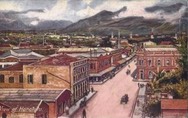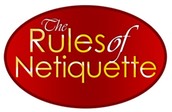The following were extracted from the book “The Art of the Hula” by Allan Seiden, 2001, Island Heritage Publishing, Waipahu, HI, pp12-55.
While hula was a folk art practiced with great enthusiasm by the makaʻaina (commoners), it was also a record of history that merged with myth, linking the aliʻi, or chiefs, to the pantheon of ancestral gods. As such it was part of religious ceremonies, detailing the existence of the gods and the exalted aliʻi who populated Hawaiian consciousness. An integral aspect of life in Polynesian Hawaiʻi, hula was both an art form and an honorific offering.
The traditional dress code for the hula, which was the same for men and women, consisted of a ruffled paʻu (skirt) made of yards of the finest kapa (bark cloth), decoratively draped from waist to knees, lei for the head, shouders and ankles, and adornments like kūpeʻe niho ʻilio (dog-teeth leglets) that provided a rhythmic musical accompaniment. Both men and women danced bare-chested. By Kalākauaʻs day, with kapa no longer in ready supply and modesty moeasured by Victorian standards, dancers were more heavily garbed, with cloth skirts and blousy muʻumuʻu (long, loose dresses) for the women and shirts and pants, often topped with a ti leaf skirt, for the men.
Without a written language, the mele had to be memorized, even those, like genealogical chants, that took hours to recite, committed to memory with the appropriate inflections and vocal styles. The dancers also needed intimate familiarity with the mele to perform, particularly when there was choral interraction between the chanter and the dancers, as was common.
The Hawaiians appreciated poetic styling on a highly sophisticated level. Chants were filled with double meanings, adding levels of meaning to content, thereby making the mele all the more elaborate and colorful. In this epic use of language, the mele of ancient use of language, the mele of ancient Hawaiʻi are a match for the most creative use of language by any civilization, ancient or modern. There are mana in the choice of words and in the soulful recital of the chant, each powerful inflection seeking the attention of the gods.
As the story is told, it is Laʻa, son of the legendary high chief Moikeha, who brought the sacred pahu heiau (temple drums) and Kaʻekeʻeke (bamboo tapping sticks) to Hawaiʻi on his second visit from Kahiki. Both were then used in the hula. It is said that Laʻa traveled from island to island teaching the dance before returning to Kahiki.
Laka, goddess of the forest, was also widely acknowledged as patron of the hula. The forest vines and greenery that served as offerings to Laka were each considered a form of the goddess herself, and were thereby possessed of her mana.
The best troupes were supported as part of the retinue of ruling chiefs, whose prestige was enhanced by links to a respected halau hula. Sponsored troupes honored their royal patrons with chants and dances that linked them to the gods.
All hula were preceded and followed by prayers, and many of the most popular dances told stories of godly adventures. The pule kuahu, or prayer offerings, were as rich in poetic imagery as the mele that accompanied the dance, for it was hoped that the dancers would be beneficiaries of godly inspiration.
Today, hula is a living part of Hawaiian culture, a powerful tie to the past and to an artistic legacy that could have been irretrievably lost. It is one part of a widespread cultural revival that is remaking Hawaiian consciousness as the new millennial age dawns. It is the combined efforts of kumu, halau and their supporters that have restored to hula the respect it undeaniably deserves. Theirs has been an impressive accomplishment, restoring hula as a cultural icon that defines Hawaiʻi for much of the world.
Back in the 1950s when I was in grade school, we were taught to sing and dance several of what was known as the “hapa haole” hula songs. Every time I hear the “Hukilau” song or the “Little Brown Gal” song I still feel like I ought to get up and start to sing and dance.
Two very famous hula festivals in Hawaii.
Prince Lot Hula Festival.
Festival was founded in 1978 by Moanalua Gardens Foundation.
Moanalua Gardens, Honolulu, HI was a favorite recreation spot for Prince Lot. Prince Lot who later became King Kamehame V, reprised the once forbidden hula in the district of Moanalua.
39th Annual Prince Lot Hula Festival, 16-17 Jul 2016. http://moanaluagardensfoundation.org
Merrie Monarch Festival.
The festival began in 1963 to increase tourism to the Island of Hawaii. Today the Merrie Monarch Festival is an annual week-long event. The last three days are dedicated to hula competitions.
The festival is held at the Edith Kanakaʻole Stadium, Hilo, HI. It is dedicated to the memory of King David Kalākaua, the last king of the Kingdom of Hawaii (1874-1891). Kalākaua was a patron of the arts, especially music and dance, and is credited with reviving many endangered native Hawaiian traditions such as mythology, medicine and chant.
2016 Merrie Monarch Festival: 27 Mar - 2 Apr 2. http://www.merriemonarch.com
—————————————— Published Jan 2016 ——————————————


